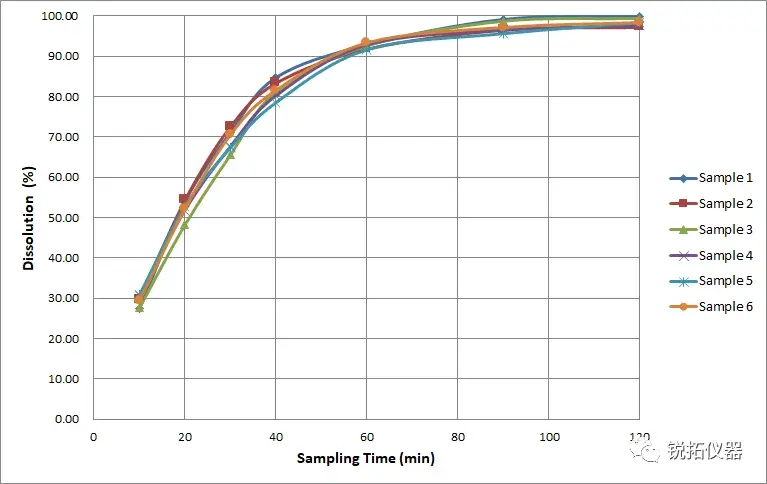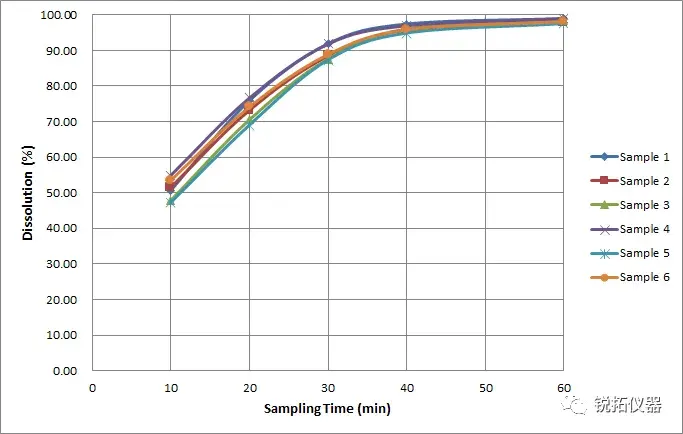Soft candy

Soft candy is a high moisture content, soft, elastic and tough dosage form. Nutritive or therapeutic soft candy can be made by adding nutritive ingredients or therapeutic drugs to soft candy.
The main characteristic of fondant is the presence of different types of colloids, which give it the properties of a gel.
Get Free Quote
Experimental parameters
| Test system | Raytor RT3-AT Reciprocating Cylinder Automated Dissolution System |
| Volume of dissolved medium | 250 mL |
| Temperature | 37.0 ± 0.5 ℃ |
| Reciprocating stroke | 10 cm |
Experimental result

This case summarizes the in vitro releasability results of two Soft candy-based formulations and plots cumulative dissolution rate-time curves for each: Soft candy formulation A

Soft candy formulation B Both soft candy could be completely dissolved under the corresponding reciprocating cylinder test conditions. The relative standard deviation (RSD) of the final dissolution results of the fondant formulation A at 120 min was 1.0%; and that of the fondant formulation B at 60 min was 1.1%. The reproducibility of the test results was good.
Result Discussion
Within the fondant there exist reticular structures made up of linear gelatinous particles bound together and forming the skeleton of the fondant. Within these reticular or dendritic skeletal structures, various substances such as water, various excipients, and the main pharmaceutical ingredient are filled.
If the various substances within the skeleton are to be effectively released, it is necessary to open the skeleton structure within the soft candy. However, the fluid shear force generated by the conventional dissolution method is not sufficient to effectively open the skeleton structure, and the soft candy may only be in a dissolved state.
On the other hand, the reciprocating cylinder method can provide greater fluid shear force, and the skeleton structure of the soft candy is gradually opened with the up-and-down reciprocating fluid shear force, and the content is gradually dissolved until it is completely released. In addition, it has been suggested that glass beads can be added to the reciprocating cylinder to simulate the chewing of the drug in the mouth and to further increase the external shear force to which the drug is subjected.

